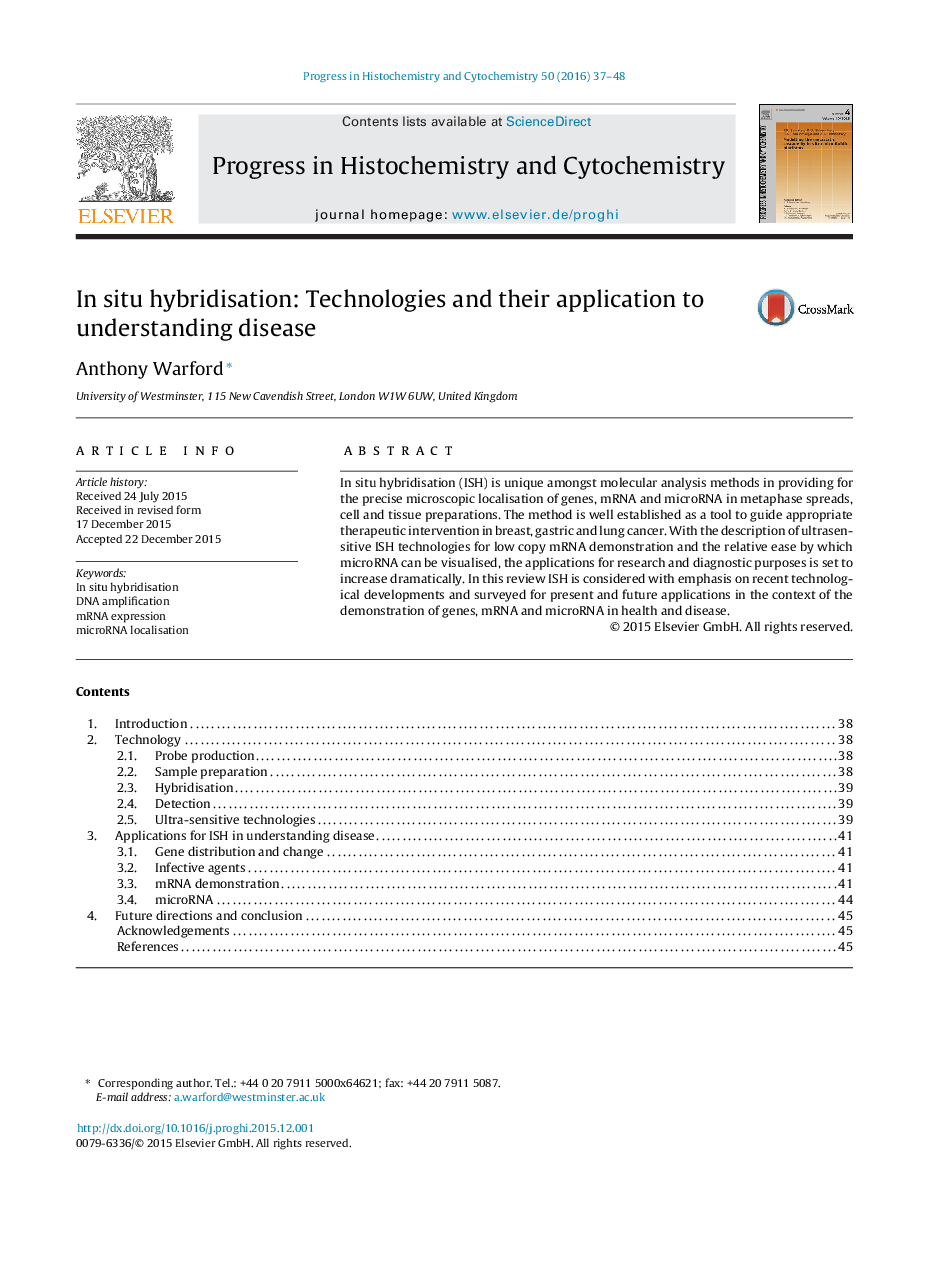| Article ID | Journal | Published Year | Pages | File Type |
|---|---|---|---|---|
| 2018916 | Progress in Histochemistry and Cytochemistry | 2016 | 12 Pages |
•The key technological aspects of in situ hybridisation.•Recent developments in the technology with an emphasis on the emergence of ultra-sensitive methods to demonstrate low copy targets.•Considers diagnostic and research applications for in situ hybridisation for the visualisation of genes, infective agents, mRNA and microRNA.
In situ hybridisation (ISH) is unique amongst molecular analysis methods in providing for the precise microscopic localisation of genes, mRNA and microRNA in metaphase spreads, cell and tissue preparations. The method is well established as a tool to guide appropriate therapeutic intervention in breast, gastric and lung cancer. With the description of ultrasensitive ISH technologies for low copy mRNA demonstration and the relative ease by which microRNA can be visualised, the applications for research and diagnostic purposes is set to increase dramatically. In this review ISH is considered with emphasis on recent technological developments and surveyed for present and future applications in the context of the demonstration of genes, mRNA and microRNA in health and disease.
